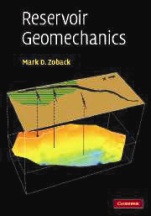Reservoir Geomechanics

Mark Zoback
Published by: Cambridge
First published: 2007
ISBN: 978-0-521-77069-9
List price: £80.00
449 pp
www.cambridge.org
There are relatively few books that cover aspects of structural geology, particularly stress, in an applied sense; so this book is a welcome addition to the literature, especially as it collates a vast amount of material published in a diverse series of journals by the author over a period of 30 years. A major advantage of the book is its interdisciplinary approach, in that it provides an excellent crossover between aspects of structural geology and reservoir engineering - a link that is all too often overlooked. Fluid properties and the causes of overpressure are dealt with, as well as the properties of the rocks themselves. The response of rocks to stress, including failure, and the determination of stresses, are covered in detail. Less familiar to those from a non-engineering background will be the consideration of wellbore stability and the effects of reservoir depletion.
Most readers are unlikely to start at page one and work systematically through to the end, but that does not matter as the book is written in an accessible way that allows the reader to dip in and out of it. The overall layout of the book follows a logical course, although some chapters are more general than others - inevitably, the first part ranges more widely than some of the later, more detailed sections. The diagrams and other illustrations are generally very clear and easy to follow, but some of the colour figures (especially those with stereographic projections) are a little blurred.
It is customary in reviews to have an ‘ah but ...,’ bit towards the end, but I genuinely have very few quibbles with this book. One minor one - for all the mention of faults, and also their sealing potential, there is little mention of the products of faulting, such as cataclasites and clay smears that can have a profound influence on fluid flow.
In conclusion, I would recommend the book to any geologist working in a situation where faults or fractures interact with the present-day stress field. The book should certainly be available to anyone working on fractured reservoirs and dealing with overpressured fields. The price of £80 is not extortionate by present-day standards and so should not, in itself, be a major source of stress.
Tim Needham
Needham Geoscience, Ilkley